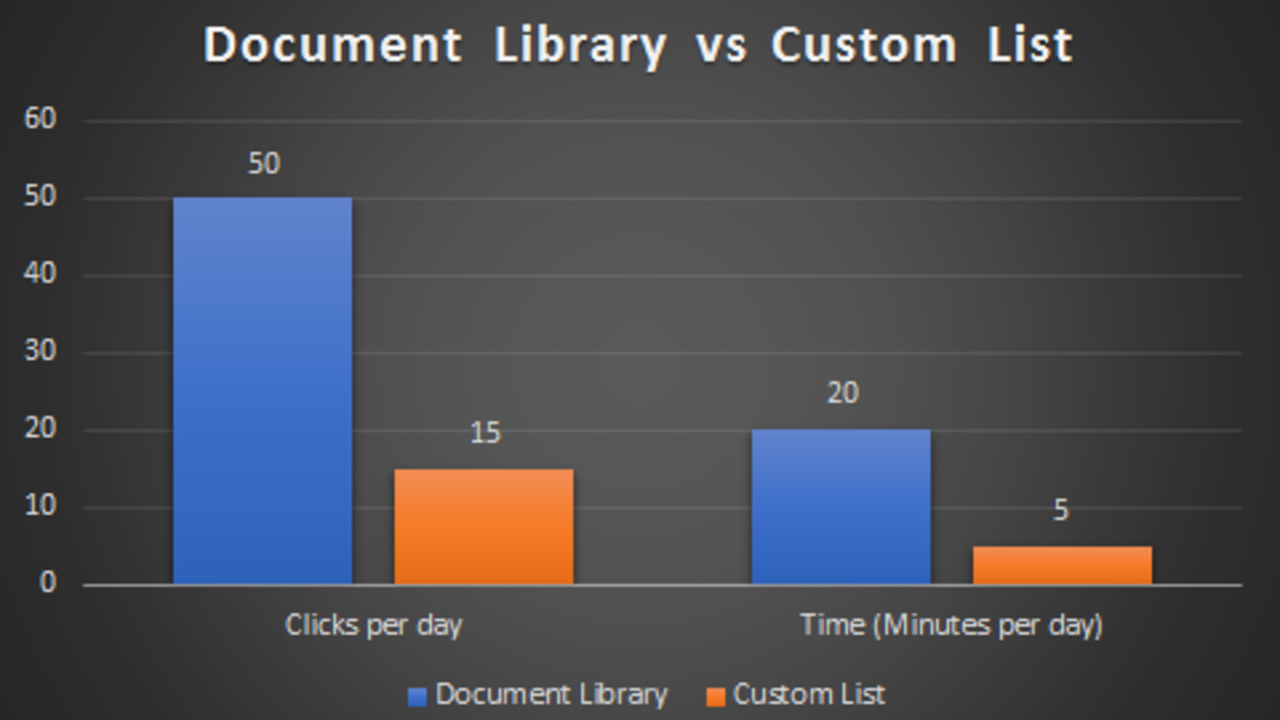A Quick SharePoint Win for Managers

I’ve written in theory for years about how managers should leverage SharePoint for streamlining collaboration. In case you’re still not convinced to act, I’ve got a shining example of a quick win you can try on your own.
I recently met with a client that had multiple document libraries in multiple site collections with more than 10,000 documents each. Two had more than 25,000. All had a last modified time of less than a couple hours.
Such situations are almost always signs of information screaming for a better way. And…before you click away from this article because you think it’s for IT folks, consider this: If you are a manager of employees, this inefficiency is costing you in labor, errors, and your own time.
Information stored in such a way might as well be invisible to you. You can only review it if you go into the libraries, click many files, and look at each of them individually…minimizing and maximizing windows the entire time. Information in Word or Excel documents is labor-intensive to review!
SharePoint custom lists make that information review-able with only a click or two as a set. Do yourself a favor and read the rest of this article!
The client and I were doing a quick review of his organization’s site health and looking for potential housekeeping opportunities. Those document libraries stood out as probable easy, quick wins.
My rule for document libraries is that if you have thousands, or even hundreds, of documents in a document library and the most recently modified time is always a short time span, there is a high likelihood there are files serving as templates and those template files are being “saved as” over and over.
Such a practice should be obsolete due to its labor intensity and the fact that the resulting information is difficult to review. Recurring items such as these are much more efficiently handled using custom lists in SharePoint.
It takes on average, ten clicks and four minutes per file to open the template and save as another filename (not to mention a lot of server and bandwidth space).
Entering the same information into a web form of a SharePoint custom list takes two clicks and one minute. If you have five employees doing that same task each day, you’re wasting 12,500 clicks per year and more than 60 hours of labor. Given that building the custom list takes less than thirty minutes, you’re missing out on savings that are hard to pass up.
That time savings isn’t going to save your business by itself, but when you consider how many of those types of savings are available to you as a manager across your entire business, learning how to leverage SharePoint adds up to impressive savings.
The biggest benefit however, is in the effort it saves you as the manager when you review the input information.

Opening and reviewing only ten of the documents takes you about five minutes, and that is being very conservative. Reviewing that information in real time on your manager’s SharePoint dashboard takes about five seconds. That’s a time savings for you of 98%, not to mention you’ll be more aware of the data because you’re more likely to stay on top of it if it is right in front of your face every day.
Do yourself a favor and look through the “all site content” page of your SharePoint site. If you see a document library that is stuffed with documents and has a short “last modified” date, dig into it to see if there is a recurring file that can be turned into a web form entry format via a custom list.
You don’t need to know how to do it yourself, but at least you’ll know what to ask of your SharePoint administrator.
Is this type of information helpful to you? If so, please share or comment below!
Stay connected!
Join our mailing list to receive cutting edge content.
Don't worry, your information will not be shared.


